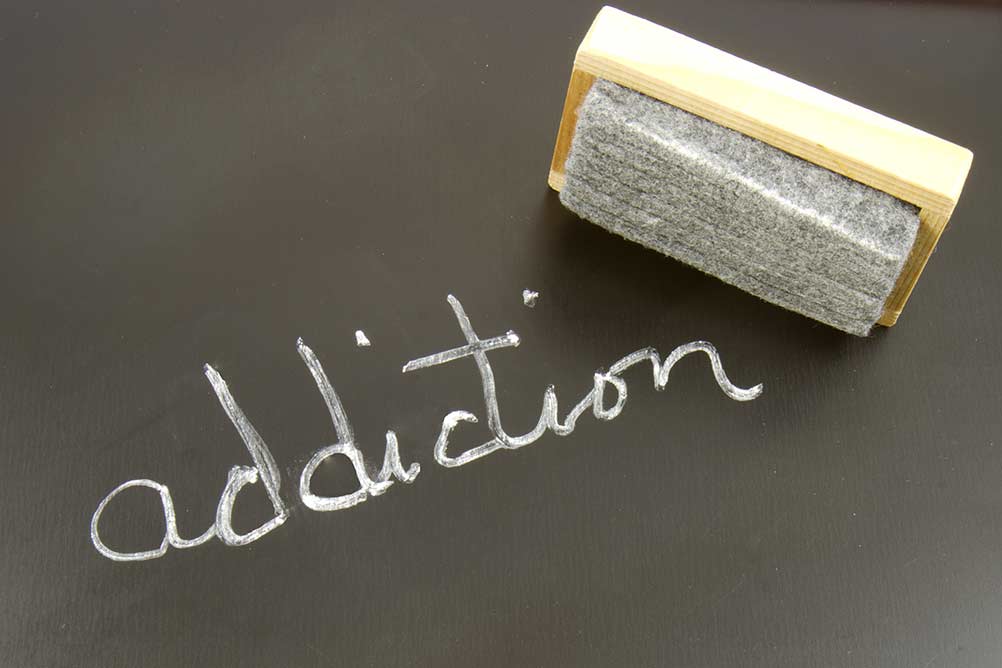Addiction as a “Chronic Disease”
The adjectives “chronic” and “relapsing” often show up in definitions of addiction. When used in a medical sense, “chronic” simply means “continuing or occurring again and again for a long time,” according to the
Merriam-Webster Dictionary. In other words, a “chronic” disease like addiction is one that can last for a long time—and maybe for a very long time—but that also can have an end point.
Some might say, “Once an addiction, always an addiction.” According to the real definition of “chronic,” however, that statement would be a bit misleading. Like any long-lasting disease, addiction and its symptoms can find relief. Moreover, with treatment of addiction’s root causes, a substance use disorder really can one day become part of one’s history, rather than an ongoing source of suffering and despair.
Addiction as a “Relapsing Disease”
Depending on the severity—and according to the latest diagnostic guidelines in the
Diagnostic and Statistical Manual of Mental Disorders (DSM-5), substance use disorders can range on a continuum from mild to severe—addiction can involve relapse. What that means is that a strong show of remission from drugs or alcohol can precede a return to the old habit of using or drinking but also doesn’t have to; or, the relapse may itself be mild and temporary.
Substance abuse can be on and off again, and in this sense is recurrent, as described in the following explanation by the Substance Abuse and Mental Health Administration (SAMHSA): “
Substance use disorders occur when the recurrent
use of alcohol and/or drugs causes clinically and functionally significant impairment, such as health problems, disability and failure to meet major responsibilities at work, school or home.”
The
relapse rates for substance use disorders align roughly with those for other chronic medical illnesses that also have physiological and behavioral dimensions. (Diabetes, hypertension and asthma are a few examples.) At 40 to 60 percent, the approximate relapse rate for addiction is actually slightly lower than relapse rates for asthma and hypertension.
Addiction as a Brain Disease
Drug and alcohol addiction can be chronic and relapsing because of how drugs or alcohol can change the very structure and function of the brain over time. These changes in the brain can raise one’s vulnerability to substance abuse, and in turn, to a cycle of addiction.
The good news is that this same plasticity of the brain, which with an untreated substance use disorder creates greater vulnerability to drugs and alcohol,
can also be a road to recovery—and, as new inroads in addiction science suggest, eventually that road may lead to an actual cure for addiction.
Thanks to a $2 million grant from the National Institutes of Health, researchers at Brigham Young University have been exploring how the brain over-compensates in response to the physiological stress of drugs and alcohol. The
findings have revealed that when drugs and alcohol release unnaturally high levels of dopamine, the brain over-corrects, producing a protein called BDNF (brain derived neurotrophic factor). BDNF in turn suppresses the brain’s normal production of dopamine over the longer term, with the result that pain, distress and anxiety belong to the experience of withdrawal.
Neuroscientist Dr. Scott Steffensen was the lead author of the study. “I am optimistic that in the near future, medical science will be able to reverse the brain changes in dopamine transmission that occur with drug dependence and return an ‘addict’ to a relatively normal state,” he said. “Then the addict will be in a better position to make rational decisions regarding their behavior and will be empowered to remain drug free.”
The work of Steffensen and his collaborators joins still other studies into how the brain disease dimension of addiction may someday find an actual cure. Last year, scientists at Texas A&M were
reportedly able to pinpoint a specific grouping of neurons in the brain linked to alcoholism, in anticipation of the forthcoming creation of a drug to combat the disease.
Effective Treatments for Drug and Alcohol Use Disorders
Such developments are promising pointers in the direction of a cure, but they are not in themselves a panacea. Even if a one-size-fits-all medical cure were found tomorrow, the fact would remain that addiction is a multi-layered disease involving not just physical but psychosocial, emotional and behavioral dimensions as well. So far that reality has meant that the
most effective treatments for drug and alcohol use disorders involve a combination of medication, psychotherapy and holistic interventions. The good news is that such interventions can be a highly effective form of disease management and relapse prevention. The resulting freedom from drugs or alcohol is, for many, a
de facto cure.






